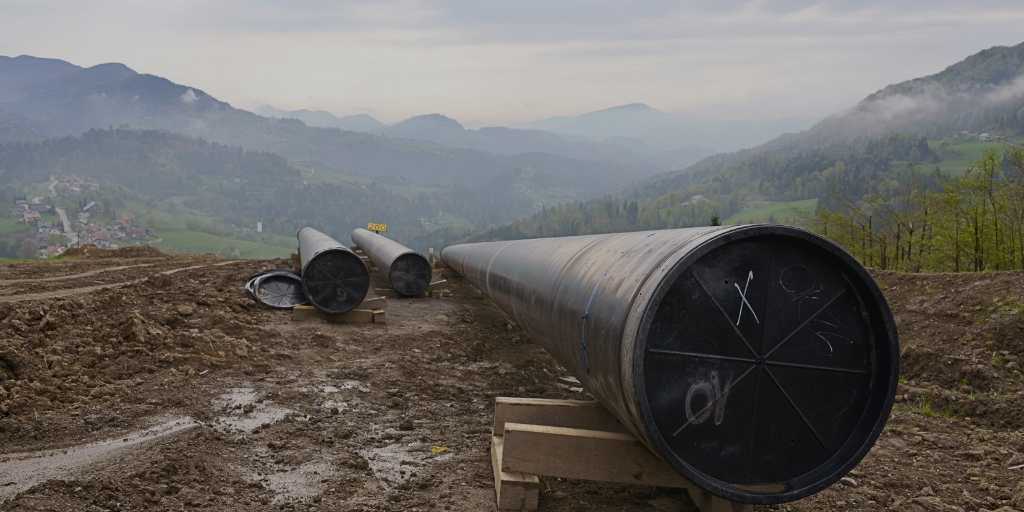In October 2020, the Ombudsman criticized the Commission for approving a list of priority gas infrastructure projects in the EU without assessing their greenhouse gas emissions. Recently the Ombudsman opened a similar inquiry against the Commission concerning its role in the emissions assessment of priority gas projects in the EU’s southern and eastern neighbours, the Energy Community countries.
The list of priority energy infrastructure projects in the region, including 12 gas projects, worth at least EUR 2 billion, was adopted by the Energy Community Ministerial Council in December 2020. This status – known as Projects of Energy Community Interest, or PECIs – grants privileged access to construction permits and public financing.
Yet, our complaint, filed in February 2021 following discussions with the Commission and Energy Community Secretariat, contends it lacked a sound sustainability assessment.
The evaluation they did undergo was based on a methodology similar to the one that was to be used for projects in the EU, during the so-called 4th Projects of Common Interest (PCI) process, but was later abandoned due to its deficiencies. The Commission, even though aware of the issues with the sustainability assessment methodology in the PCI process, failed to require that the assessment of PECIs properly accounted for their greenhouse gas emissions.
The cards are stacked in favour of gas
Every two years, under an adapted version of the EU’s TEN-E Regulation, the Energy Community Ministerial Council selects a list of gas and electricity energy infrastructure projects which receive preferential permitting and financing treatment. These so-called Projects of Energy Community Interest (PECI) and Projects of Mutual Interest (PMI) correspond to the EU’s list of Projects of Common Interest (PCIs).
The EC has a significant role in the adoption process as coordinator of the Energy Community activities and has to cast an affirmative vote in order for the PECIs and PMIs lists to be adopted. The current list of gas PECIs and PMIs was adopted in December 2020.
The key problem with the project assessment was that it assumed all gas projects would reduce CO2 emissions and not increase them. The idea was that gas would replace coal and that demand would not increase, so it would not cause additional emissions compared to today. These assessments overlooked the very likely scenario where gas would actually end up displacing other energy sources like renewable electricity or wood in some regions.
In fact, even the consultancy company that prepared the assessment warned that the methodology assumes that gas crowds out only fossil fuels. They mentioned that this might not be the reality, as in countries with high hydropower penetration increased gas-fired generation may replace hydropower, thus resulting in increased emissions.
Albania, for instance, generates all of its domestic electricity from hydropower but the assessment for new gas projects foresees a reduction in emissions. This appears to be due to the fact that the assessment included the Vlora oil-fired power plant, which in reality does not work due to technical problems.
No proof that gas would replace coal
Gas projects like the Ionian Adriatic Pipeline and Zagvozd-Posusje-Travnik (branch to Mostar) show the methodology’s assumptions are unrealistic.
The proposed Ionian Adriatic Pipeline would be displacing not only coal, but rather wood fuel and electricity for heating purposes, and at least some hydropower in Albania, Montenegro and Croatia.
The Zagvozd-Posusje-Travnik gas pipeline project in Bosnia and Herzegovina also risks increasing, rather than decreasing emissions. Most of the area it would serve currently receives electricity which is fully sourced from hydropower and wind power, while heating is mostly provided by electricity and wood. So, introducing gas in these areas would mostly displace these sources, not so much coal.
We are now asking for the removal of the gas projects from the PECIs and PMI lists on the grounds of lack of credible data on sustainability. Likewise, the adoption of any new lists must be postponed until the revised TEN-E Regulation with an upgraded greenhouse gas assessment methodology, which is currently being discussed in the EU, is adopted at the Energy Community level.
The Energy Community countries, like the rest of the world, need to decarbonise their energy sectors by 2050 at the latest. Greenlighting gas projects now undermines any efforts. New gas infrastructure may well result in the displacement of renewable energy rather than more polluting fossil fuels. There is also a real risk of locked-in investments and stranded gas infrastructure for the already depleted financial capacities of these countries. What needs to be prioritized are energy efficiency and sustainable renewable energy projects, not gas.
Never miss an update
We expose the risks of international public finance and bring critical updates from the ground – straight to your inbox.
Institution: EU funds
Theme: gas

